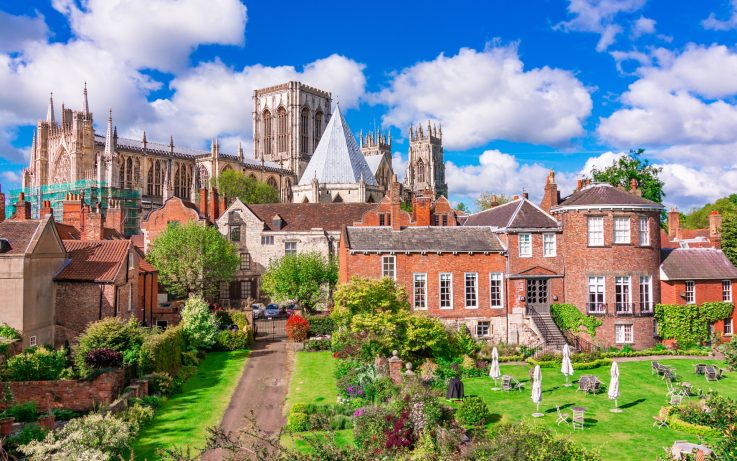British Museums: Exploring Rich Cultural Heritage

Without exaggeration, in the UK, museums are everywhere, especially in the big cities. In London alone, there are more than 50 museums and galleries dedicated to the art, history, design, and culture of Great Britain, Europe and the world in general.
Besides, you can see that the art scene is very developed: most major museums are available to the public free of charge.In this article, we will visit the eight most famous museums in the United Kingdom.
The British Museum
The British Museum was founded in 1753 and was the first museum open to the public. Today, it has over 60 galleries where you can immerse yourself in history from the very first years of ancient civilisations until the present day. You can also travel back in time to Ancient Egypt and Greece, Africa and China, around the Roman Empire and medieval Europe, or visit the New World discovered by Christopher Columbus and learn about the traditional art of the Americas. The museum’s most famous highlights include the Rosetta Stone, statues of Pharaohs Ramses II and Amenhotep III, the full vestments of a samurai, and a sculpture from Easter Island.
Address: Great Russell Street, London, WC1B 3DG
Opening hours: daily: 10:00-17:00 (and until 20:30 on Fridays)Tickets: free of charge for the permanent exhibition, booking in advance on the museum website is strongly recommended.
Taking photos: allowed without a tripod.
The National Gallery
The National Gallery is a must if you are visiting London. This famous English museum was founded in 1824 when the British government acquired 38 paintings that previously belonged to John Angerstein, businessman and insurer. Today, the museum’s collection totals 2,600 works, and many aficionados call it the most representative collection of art in Europe. The museum features paintings by Italian, Dutch, British, French, Spanish and Flemish artists. Among them are Leonardo da Vinci, Raphael, and Jan Vermeer. A small collection of French Impressionists and Post-Impressionists is also a must-see.
Address: Trafalgar Square, London, WC2N 5DN
Opening hours: daily except on 24, 25 and 26 December and 1 January, 10:00-18:00 (until 21:00 on Fridays)Tickets: free of charge for the permanent exhibition, booking in advance on the museum website is strongly recommended.
Taking photos: allowed without a tripod.
The Tower of London
At different times, the Tower of London was used as a fortress, a palace and a prison. Built in the 11th century, it is a unique symbol of the royal power. Today, it is a UNESCO World Heritage Site which attracts millions of visitors from all over the world. In every building, you can feel the spirit of British history starting from the era of William the Conqueror. One of the attractions of the Tower is the famous ravens. The Tower is home to six ravens called Jubilee, Harris, Poppy, Georgie, Edgar and Branwen. An old legend has it that if the ravens leave the Tower, the kingdom will fall, so they are extremely well protected. The Tower also houses a collection of royal jewellery consisting of 23,500 gemstones. Among them are jewels that are still worn by British monarchs during coronations.
Address: Tower of London, London, EC3N 4AB
Summer Opening: 1 March — 31 October:
Tuesday-Saturday: 09:00-17:30 Sunday-Monday: 10:00-17:30
Last admission: 17:00
Winter Opening: 1 November — 28 February:
Tuesday-Saturday: 09:00-16:30
Sunday-Monday: 10:00-16:30
Last admission: 16:00
Tickets:
- adults — £33.60;
- children (5 – 15 years of age) — £16.80;
- children under 5 years of age — free of charge.
Taking photos: allowed everywhere except for the exhibition of the Crown Jewels.
Buckingham Palace
The palace is a residence of the British monarchs, a venue for national and royal festivals, and a stage for London’s most popular “performance” – the Changing of the Guard. To the delight of tourists, Buckingham Palace is open not only to members of the royal family. The general public can visit the palace in the summer, as well as on certain dates in winter and spring. During a tour around the palace, you will see the Throne Room and Ballroom, drawing rooms and lounges, royal stables, carriages and gardens. You can drink the famous English tea in the terrace café and, of course, admire the luxurious collection of art, furniture, sculptures, candelabras, vases and other furnishings and decorations. For visitors with children, the Family Pavilion on the terrace is available, where little museum lovers can burn off excess energy.
Address: Buckingham Palace, London, SW1A 1AA
Opening hours: From November until May, guided tours are available to visitors. They are held in the following time slots:
- on Fridays: 16:00 and 16:30;
- on Saturdays and Sundays: 11:00, 11:30, 13:30, 14:00 and 14:30.
Each guided tour lasts 90 minutes.
Tickets:
- adults — £90;
- children (5 — 17 years of age) — £49.50;
- children below 5 years of age — free of charge.
Tickets during summer opening hours:
- adults — £30 if booked in advance, £33 on the day of the visit;
- youth (18 — 24 years of age) — £19.50 if booked in advance, £21.50 on the day of the visit;
- children (5 — 17 years of age) — £16.50 if booked in advance, £18 on the day of the visit;
- children below 5 years of age — free of charge.
Taking photos: prohibited.
The Churchill War Rooms
History fans will certainly be interested in discovering what life was like in the UK during the Second World War. The secret underground labyrinth bunker opened on 27 August 1939, a week before Britain declared war on Germany. It was used 24 hours a day until 16 August 1945. During the tour, you will walk through the corridors of the bunker, take a peek into the Map Room, the bunker’s information centre during the war, and learn about the remarkable life of Winston Churchill, from his lonely childhood to his brilliant military and political career.
Address: Clive Steps, King Charles Street, London, SW1A 2AQ
Opening hours: daily: 9:30-18:00.
Tickets:
- adults — £27.25;
- children (5 — 15 years of age)— £13.60;
- children below 5 years of age — free of charge.
Taking photos: allowed without flash and tripod.
Tate
Tate Modern is a paradise for contemporary art fans. The gallery houses both works by early-20th-century masters and the work of young contemporary artists. They include paintings, sculptures, installations, performances and video projects. From Picasso and Matisse to Holzer and Kusama, the list of contemporary artists at the Tate Galleries is truly endless. If you don’t want to be just an admirer of the art, try your hand at being an artist. The Tate Draw project allows all lovers of self-expression to paint a picture online or on the tablet in the museum, and then see a projection of it on the wall of the hall, download it to your phone or even print it on a T-shirt.
Address: Bankside, London, SE1 9TG
Opening hours: daily except on 24, 25, and 26 December: 10:00-18:00.
Tickets: free of charge, no booking in advance is required.
Taking photos: allowed.
Shakespeare’s Globe
If you prefer literature and theatre to visual arts, the Globe is for you. It is a replica of Shakespeare’s theatre, which transports the audience to 16th-century London. During a tour of the Globe, you can immerse yourself in the atmosphere of Shakespeare’s London, and learn how the theatre, founded in 1599, survived plague, fires, and repressions and became a symbol of progressive views. You’ll also be able to imagine how crowded the Globe was when thousands of people gathered to see the famous actors of the day. Visitors are offered general and thematic tours of the theatre and the surrounding area.
Address: Bankside, New Globe Walk 21, London SE1 9DT
Opening hours: check on the website as the opening hours might vary.
Tickets:
- adults — £25;
- children below 16 years of age — £18.
Taking photos: allowed.
National Railway Museum in York
Many British museums can be exciting for children as well. The National Railway Museum fuels the curiosity of both younger and older visitors and inspires them to discover more about the engineering marvels that made trains a part of our everyday reality. Rail enthusiasts are sure to be delighted by the museum, exploring many trains from different periods both from the inside and outside: you can explore vehicles from Queen Victoria’s carriage to modern high-speed trains. For £4 you can take a ride on a steam train in the museum’s courtyard, and relax in the café with a cup of traditional English tea.
Address: Leeman Road, York, YO26 4XJ
Opening hours: 10:00-17:00 daily.
Tickets: free of charge; donations are welcome.
Taking photos: allowed without flash and a tripod.
Conclusion
The UK attracts people with a wide range of interests. Fans of art, history and culture will marvel at top-class museums. You can immerse yourself in different historical periods, learn unusual facts about art and technology, and be inspired to explore the world around you. With a great variety of museums and galleries, you’re sure to find a place you’ll want to visit again and again.
FAQs about British Museums
What is the most popular museum in London?
The British Museum is the most popular in London. Between 2018 and 2019, the number of visitors exceeded 6 million.
What is the oldest museum in London?
Ashmole Museum is the oldest museum not only in the UK but also in the world. It opened in 1683, 70 years earlier than the British Museum.
Which is the biggest museum in London?
And the British Museum wins this too. It is one of the largest museums in the world. Its area is 92,000 square metres.






